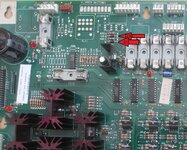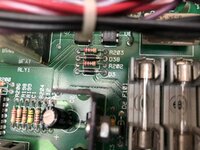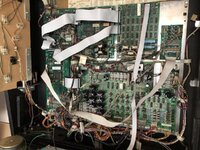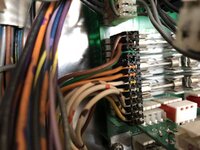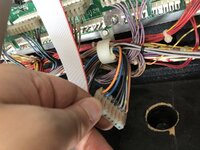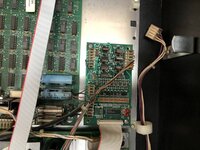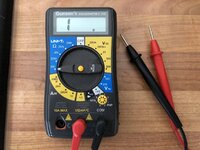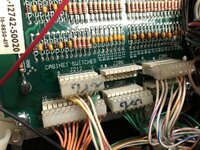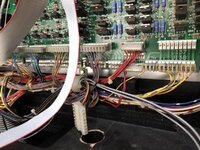I have a feeling this isn't an easy or cheap fix..
I discovered tonight that my G.I. doesn't dim. I figured because I had LEDs in there that this was normal, but when I fit the LEDs to my friend's Funhouse his G.I. flickered/strobed something fierce when I went down the brightness settings in the test menu. Anyway, something @Monkeyboypaul said earlier prompted me to check mine for strobing, when I discovered the problem. Since I bought the pin with these bulbs already fitted, it's quite possible the problem has existed since I bought it.
Unfortunately (for me) Standard adjustment 25 is already set to "Allow G.I. Dim" = YES (default). I'm aware that setting this to NO blocks G.I. dimming in test mode too.
All of the G.I. works, but none of it dims. Brightness levels 1-8 do not alter the brightness in any way.
I put an incandescent bulb in the right slingshot, thinking perhaps the LEDs were non-ghosting or otherwise compensating, but that doesn't dim either - so definitely a board problem somewhere.
I've reached the end of my capabilities really. A cursory search seems to point to a "zero cross" thing being the next thing to test. I don't own a scope though, and wouldn't have the first clue how to use one if I did.
I'm happy to pay someone to come out and take a look at it. The pin is located near to Bath, BA2 postcode.
Thanks in advance
I discovered tonight that my G.I. doesn't dim. I figured because I had LEDs in there that this was normal, but when I fit the LEDs to my friend's Funhouse his G.I. flickered/strobed something fierce when I went down the brightness settings in the test menu. Anyway, something @Monkeyboypaul said earlier prompted me to check mine for strobing, when I discovered the problem. Since I bought the pin with these bulbs already fitted, it's quite possible the problem has existed since I bought it.
Unfortunately (for me) Standard adjustment 25 is already set to "Allow G.I. Dim" = YES (default). I'm aware that setting this to NO blocks G.I. dimming in test mode too.
All of the G.I. works, but none of it dims. Brightness levels 1-8 do not alter the brightness in any way.
I put an incandescent bulb in the right slingshot, thinking perhaps the LEDs were non-ghosting or otherwise compensating, but that doesn't dim either - so definitely a board problem somewhere.
I've reached the end of my capabilities really. A cursory search seems to point to a "zero cross" thing being the next thing to test. I don't own a scope though, and wouldn't have the first clue how to use one if I did.
I'm happy to pay someone to come out and take a look at it. The pin is located near to Bath, BA2 postcode.
Thanks in advance

